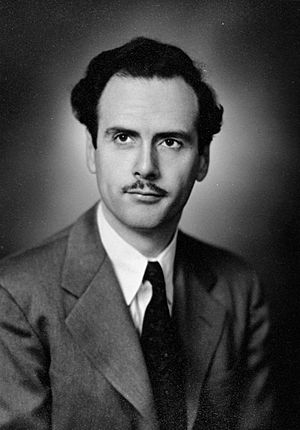Understanding Media facts for kids
| Author | Marshall McLuhan |
|---|---|
| Country | Canada |
| Language | English |
| Subject | Media theory |
| Publisher | McGraw-Hill |
|
Publication date
|
1964 |
| Pages | 318 pp (first edition) |
| ISBN | 81-14-67535-7 |
Understanding Media: The Extensions of Man is a famous book from 1964. It was written by Marshall McLuhan, a professor from Canada. McLuhan was very interested in how different types of media, like TV or books, change the world around us. This book was one of the first to deeply explore these ideas.
The main idea of the book is that the way we get information (the media itself) is more important than the information we receive. McLuhan believed that media shapes how we think and live. He wanted to help people understand how new media have changed society over time.

Contents
What is "The Medium is the Message"?
This book is famous for the phrase "The medium is the message". This means that the type of media used to share information is more important than the actual message. For example, a TV show might have the same story as a book. But the experience of watching TV is very different from reading a book. McLuhan thought these differences were very important.
The Light Bulb Example
McLuhan used a simple example to explain his idea: a light bulb. A light bulb doesn't have a "message" like a newspaper or a TV show. It doesn't tell you a story or give you news. But it still has a huge effect on society.
Before light bulbs, people mostly worked and did things during the day. After dark, it was hard to do much. But with light bulbs, people could work, read, and play at night. The light bulb changed how people lived, worked, and socialized. It created a new environment just by being there. This shows how a medium, even without specific content, can change our lives.
How Different Media Affect Us
McLuhan also thought that different media involve us in different ways. Think about reading a book. If you don't understand something, you can stop and reread it. You can go back and forth through the pages. Reading is a step-by-step process.
Now, think about watching a movie or TV. You usually watch it from start to finish. If you miss something, it's gone unless you rewind. Movies and TV often give you a lot of information all at once. McLuhan called this an "all at once-ness." He believed that these differences in how media work change how our brains process information.
Why This Book Matters
Understanding Media became a very important book. It helped people understand the powerful role media plays in our lives. It showed how media can change cultures and connect people around the world. The book is still studied today in media studies classes. It helps students learn about the history and effects of communication.
Images for kids
-
Communication technology's impact on Western culture. Print culture generates the most socially revolutionary and eversive forces, while electric media makes people more reactionary.

